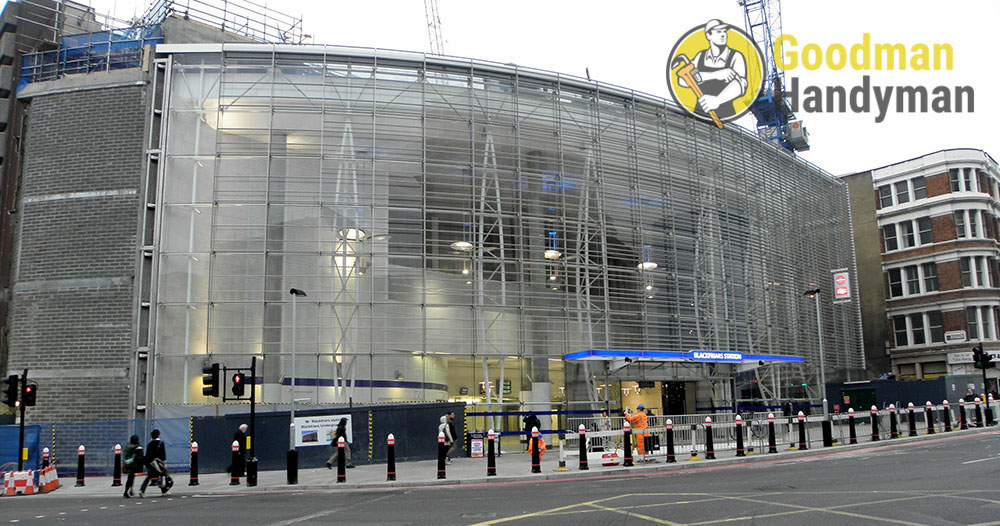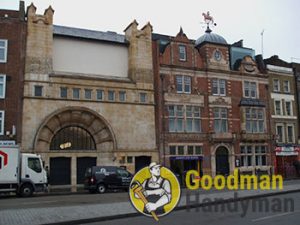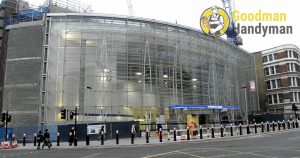
There is no need to say that the City of London is indeed the heart and soul of the capital. The area is the historical ground on which London was built and of course there are quite a lot of things that can be said about it.
Today the City is primarily known as a tourist attraction as well as the place that plays probably the most important part on the theatre of global markets. But people often forget that around every corner here awaits a story and nearly every building in the City of London has something interesting to be said about it. Let’s have a look at several key historical locations here.
The eastern gateway
Aldgate EC3 is the name of an area within the city of London that takes its name from an ancient gate that used to be the easternmost gate of the city.  Today the heart of the area is the Aldgate High Street which lies no more than 4 kilometres away from Charing Cross. There is much dispute surrounding the origin of the name Aldgate, but most specialists agree that it means “east gate” or “old gate” and was recorded for the first time in 1054 or 1108. It is safe to assume that actually the gate was constructed much earlier – in the Roman period even, but major rebuilding was done in 1108 and 1147, as well as in 1215 during the big reconstructions of the London Wall. It is not certain when the gate was actually destroyed, but it should be some time after 1598, because at that time it was described in a book by John Stow. Today Aldgate is one of the 25 wards of London, and there is a major traffic roundabout at the place where the actual gate was standing.
Today the heart of the area is the Aldgate High Street which lies no more than 4 kilometres away from Charing Cross. There is much dispute surrounding the origin of the name Aldgate, but most specialists agree that it means “east gate” or “old gate” and was recorded for the first time in 1054 or 1108. It is safe to assume that actually the gate was constructed much earlier – in the Roman period even, but major rebuilding was done in 1108 and 1147, as well as in 1215 during the big reconstructions of the London Wall. It is not certain when the gate was actually destroyed, but it should be some time after 1598, because at that time it was described in a book by John Stow. Today Aldgate is one of the 25 wards of London, and there is a major traffic roundabout at the place where the actual gate was standing.
The fortified tube station
Barbican EC1 is an area that is situated around the eponymous tube station in one of the most central parts of the City of London at the present moment. As you may already know, a barbican is a type of fortification and there is little doubt about the place from where the name of this busy commercial district of London comes from. The tube station itself is a major terminus for rail transport in London and among the oldest stations in the capital too. It was originally opened in 1865 and went through a number of name changes before it got its current one. Located near is the Barbican Estate – another iconic building in Central London, but this time it was built in the 1960s and the 1970s. It is hailed as one of the most complete and iconic examples of the brutalist architecture in Britain. The so called “Barbican Complex” is formed by the the Barbican Arts Centre, the Museum of London, the Guildhall School of Music and Drama, the Barbican public library, the City of London School for Girls all within the premises of the estate.
The south-west corner
Blackfriars EC4 is an area that is very well known to anyone visiting London. Throughout its long and interesting history the area played a pretty important part in the royal history of England. Actually, Blackfriars was the place where the divorce hearing of Catherine of Aragon and Henry VIII took place in 1529.  Blackfriars was also the place of the Blackfriars Theatre, a rival of the nearby Shakespeare’s Globe Theatre. It should be noted that most of the older parts of Blackfriars are very well preserved – in the likes that they were throughout the 19th and early 20th century. That is the reason why Blackfriars is very often featured in films that take place in those periods. David Copperfield and nearly all screen adaptations of Sherlock Holmes were filmed in the vicinity of Blackfriars. At the present moment Blackfriars is the location of the Blackfriars railway station, one of the biggest and busiest train stations in Central London at the present moment. The Victoria Embankment is another important location within the territory of the EC4 district. It is a road and river-walk running from Blackfriars to the Palace of Westminster. The embankment contains several important memorials including the Battle of Britain Monument.
Blackfriars was also the place of the Blackfriars Theatre, a rival of the nearby Shakespeare’s Globe Theatre. It should be noted that most of the older parts of Blackfriars are very well preserved – in the likes that they were throughout the 19th and early 20th century. That is the reason why Blackfriars is very often featured in films that take place in those periods. David Copperfield and nearly all screen adaptations of Sherlock Holmes were filmed in the vicinity of Blackfriars. At the present moment Blackfriars is the location of the Blackfriars railway station, one of the biggest and busiest train stations in Central London at the present moment. The Victoria Embankment is another important location within the territory of the EC4 district. It is a road and river-walk running from Blackfriars to the Palace of Westminster. The embankment contains several important memorials including the Battle of Britain Monument.

